Topics
Category
Era
City of Harmony
The City of Harmony traces its origins to an 1854 Norwegian settlement called Greenfield Prairie, just outside the town’s current southern edge. Its creation, population growth, and lasting economic vitality were made possible by the arrival of the Caledonia, Mississippi and Western Railway in 1879.
Harmony flourished after the first trains arrived in late 1879. By 1886, it had several businesses, including a millinery shop, blacksmith, lumberyard, roller-skating rink, implement dealer, harness shop, photography studio, creamery, flourmill, barbershop, and a mercantile, hardware and drug store. By 1897, a two-story white frame school was built to accommodate the student population. The creation of the Harmony Independent School District #228 in 1901 paved the way for a new 1910 brick high school.
Although Harmony Township was organized on May 11, 1858, the City of Harmony was not officially incorporated until October 14, 1895. A legend exists about how Harmony got its name. Town citizens held a meeting to decide what to call the village. After tempers flared and arguments erupted, one citizen pleaded, “Let’s have harmony!” It was decided “Harmony” was the perfect name.
Harmony’s first major fire happened in 1884 when sparks from a freight train landed in the grain elevator’s haymow. A fire burned for days, destroying the elevator. A bucket brigade moved water from a nearby farm’s well to douse the fire, which threatened the town’s nearby business and residential areas. Partially as result, a city well was dug in 1885, marked by a sixty-foot windmill.
The Harmony Methodist Church was the first church built within the city limits. It was dedicated in 1895, the same year the city installed sidewalks and electric lights. The Greenfield Lutheran Congregation, which had built a church in Greenfield Prairie in 1874, completed a Lutheran Chapel in Harmony in 1901. A larger Lutheran church was dedicated in 1913. The town’s first Catholic church was built in 1907.
In 1884, the Harmony Concert Band entertained the city’s residents with summer performances. Its first performance, on July 4, 1884, was held on the rail depot platform. The band gave Sunday afternoon concerts at the depot throughout the summer. The band also gave concerts at Selvig Park. The park, created in 1923, also hosted the Chautauqua Circuit, a traveling entertainment troupe which performed in a circus tent each summer.
Concerts, dances and plays were held in the 1909 Harmony Opera House. Harmony’s Yates Harp Orchestra held a regular gig at the opera house, performing at dances every Wednesday night for many years. Harmony residents watched movies at the Orient Theatre and then the JEM Theatre, which opened in 1935. The JEM is still in operation, holding the distinction as the only movie theatre in Fillmore County.
During the Great Depression, Harmony benefitted from United States Works Progress Administration funds. A bond issue was passed to match funds from the WPA for paving the city’s roads, installing an upgraded water system and a new city building. In 1935, another WPA proposal was introduced to build a new high school. It passed and the school was built. An addition was added in 1968. When Harmony’s School District consolidated with the Preston-Fountain School District in 1993, Harmony retained the high school.
Harmony sits in the middle of prime farmland, and agriculture is still an important contributor to the city’s economic sustainability. Niagara Cave has attracted tourists to the area since it opened for tours in 1934. The arrival of the Amish in 1974 provided another opportunity for Harmony to entice tourists.
Even with the 1977 removal of the rail line, Harmony continued to be home to a variety of local businesses. Some of the oldest include Harmony Agri-Services, Harmony House Restaurant, Harmony Enterprises Inc., Torgerson-Ostby Floor Coverings & Stone, Inc., and Hahn Lumber Co. The establishment of the Harmony–Preston Valley Trail along the old railroad bed in 1997 also had a positive economic impact.
Harmony’s largest event is its annual Fourth of July celebration. Thousands flock to see the Grand Parade, attend a concert in Selvig Park, and watch fireworks. One thousand people and dozens of thriving local businesses call the self-declared “Biggest Little Town in Southern Minnesota” home.
Bibliography
Curtiss-Wedge, Franklin. History of Fillmore County, Minnesota. Vols. I & II. Chicago: H. C. Cooper Jr, 1912.
Hahn, Amy Jo. “Isabel Daniels Paolini.” Transcript of an oral history conducted January 13, 2016. “Oral History Project: Voices of Harmony,” Harmony Area Historical Society.
Fillmore County Historical Society. Fillmore County History 1984. Dallas: Taylor Publishing, 1984.
Jacobson, Anna Aaberg. “Memories of Early Years of Harmony.” Harmony Area Historical Society archives, 1956.
Johnson, Milicent Yates. Let’s Have Harmony: A Centennial History. Harmony Centennial Committee. Rochester, MN: Davies Printing, 1996.
“Let’s Have ‘Harmony’: The Biggest Little Town in Southern Minnesota.” City of Harmony Historic Educational Panels. [Harmony, MN]: Harmony Area Historical Society, 2017.
Neill, Edward D. History of Fillmore County. Minneapolis: Minnesota Historical Company, 1882.
Related Images
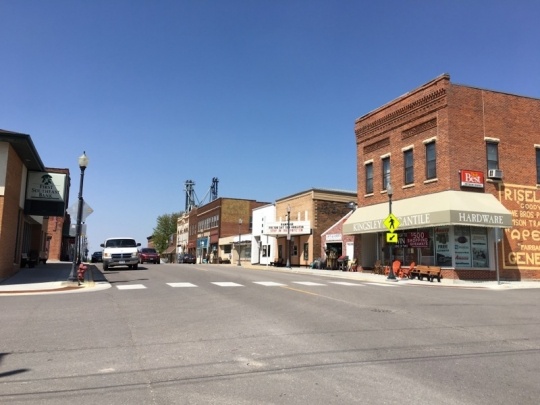
South Main Street, Harmony
Holding Location
Articles
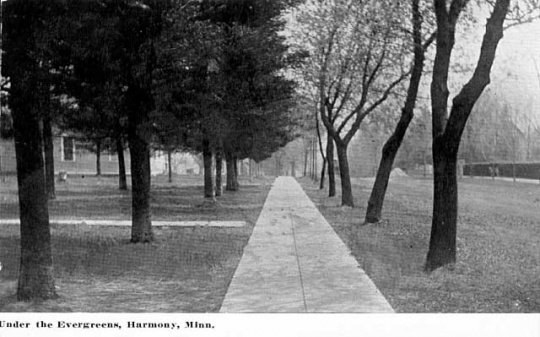
Residential street, Harmony
Public domain
Holding Location
Articles
More Information
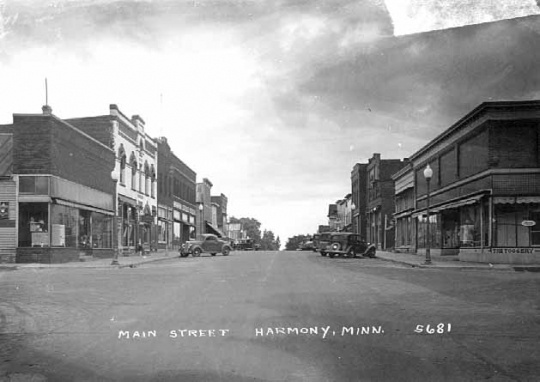
Main Street South, Harmony
Public domain
Holding Location
Articles
More Information
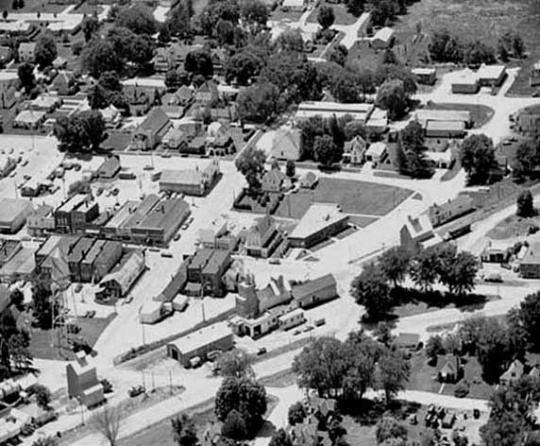
Aerial View of Harmony, 1972
Public domain
Holding Location
Articles
More Information
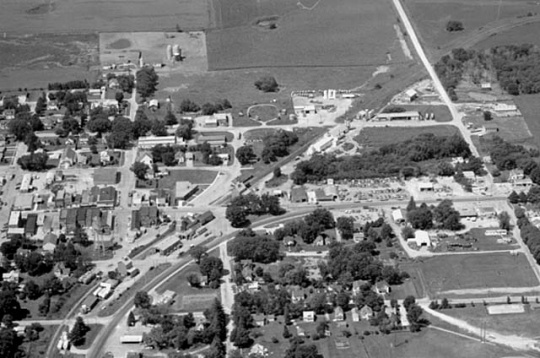
Aerial View of Harmony, 1973
Public domain
Holding Location
Articles
More Information
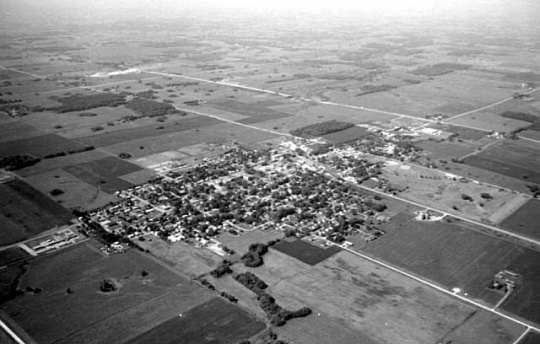
Aerial View of Harmony, 1976
Public domain
Holding Location
Articles
More Information

1994 US Post Office Christmas Stamp Release, Harmony
One of the commemorative Christmas stamps first released by the US Post Office in Harmony on October 20, 1994. Photograph by Amy Jo Hahn; used with the permission of Amy Jo Hahn.
Holding Location
Articles
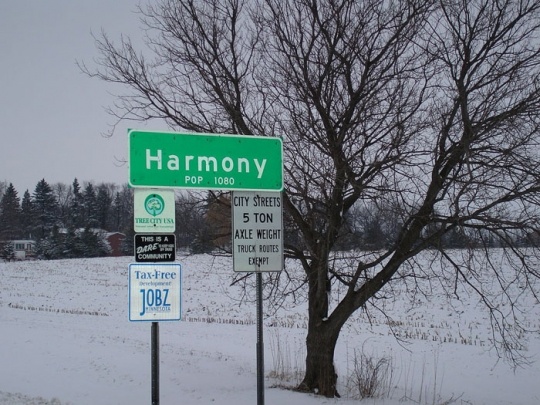
Harmony signpost
Holding Location
Articles
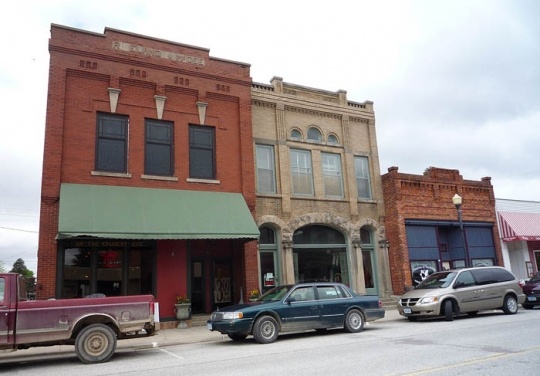
Main Street, Harmony
Holding Location
Articles
More Information
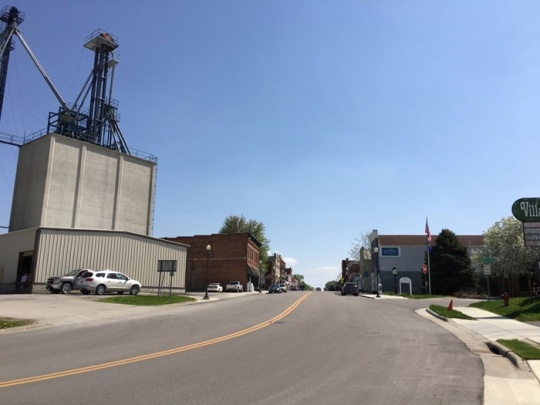
Entrance to Harmony’s Main Street
Holding Location
Articles
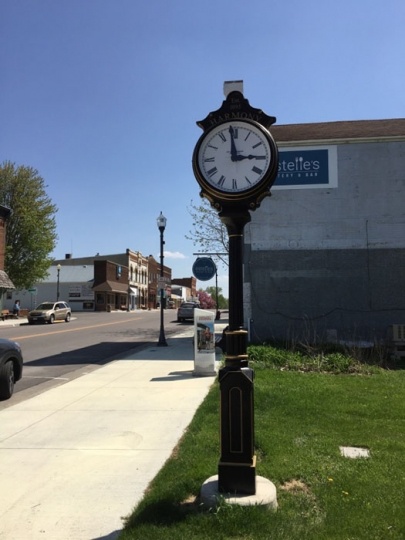
Clock at the north entrance of Main Street
Holding Location
Articles
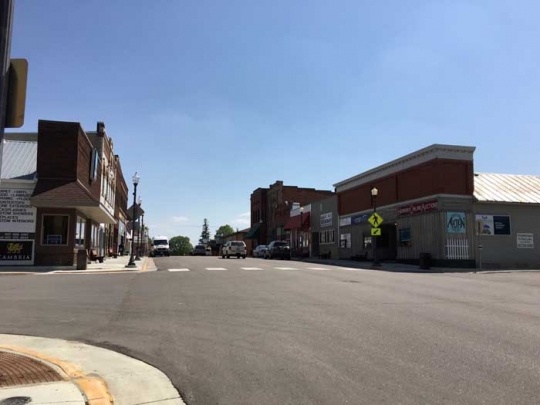
North Main Street, Harmony
Holding Location
Articles

Harmony Water Tower
Holding Location
Articles
Related Articles
Turning Point
In 1879, railroad tracks are laid along the northern edge of the village of Harmony The first passenger and freight trains begin arriving at regular intervals, connecting Harmony farmers, businesses, and citizens with the state, region and country and driving the community’s development into a thriving small town.
Chronology
1854
1859
1879
1884
1886
1895
1936
1974
1977
1993
1994
1997
2018
Bibliography
Curtiss-Wedge, Franklin. History of Fillmore County, Minnesota. Vols. I & II. Chicago: H. C. Cooper Jr, 1912.
Hahn, Amy Jo. “Isabel Daniels Paolini.” Transcript of an oral history conducted January 13, 2016. “Oral History Project: Voices of Harmony,” Harmony Area Historical Society.
Fillmore County Historical Society. Fillmore County History 1984. Dallas: Taylor Publishing, 1984.
Jacobson, Anna Aaberg. “Memories of Early Years of Harmony.” Harmony Area Historical Society archives, 1956.
Johnson, Milicent Yates. Let’s Have Harmony: A Centennial History. Harmony Centennial Committee. Rochester, MN: Davies Printing, 1996.
“Let’s Have ‘Harmony’: The Biggest Little Town in Southern Minnesota.” City of Harmony Historic Educational Panels. [Harmony, MN]: Harmony Area Historical Society, 2017.
Neill, Edward D. History of Fillmore County. Minneapolis: Minnesota Historical Company, 1882.














